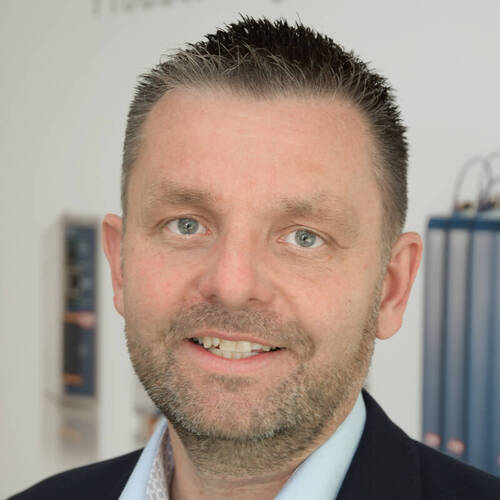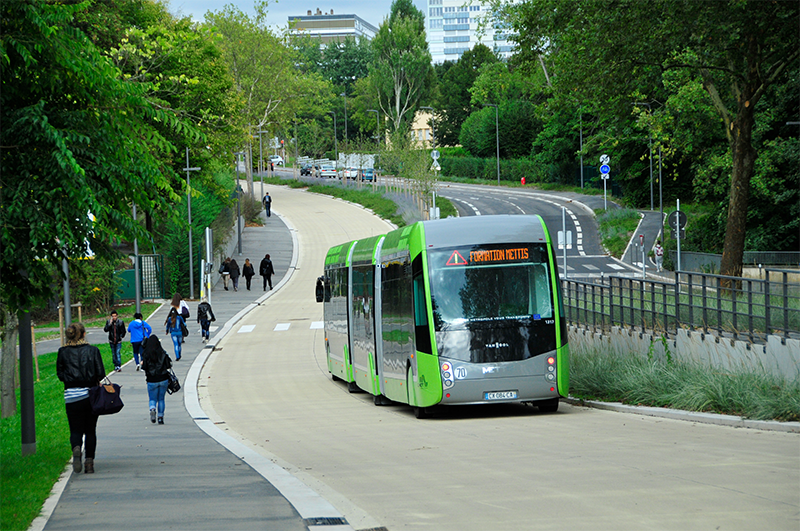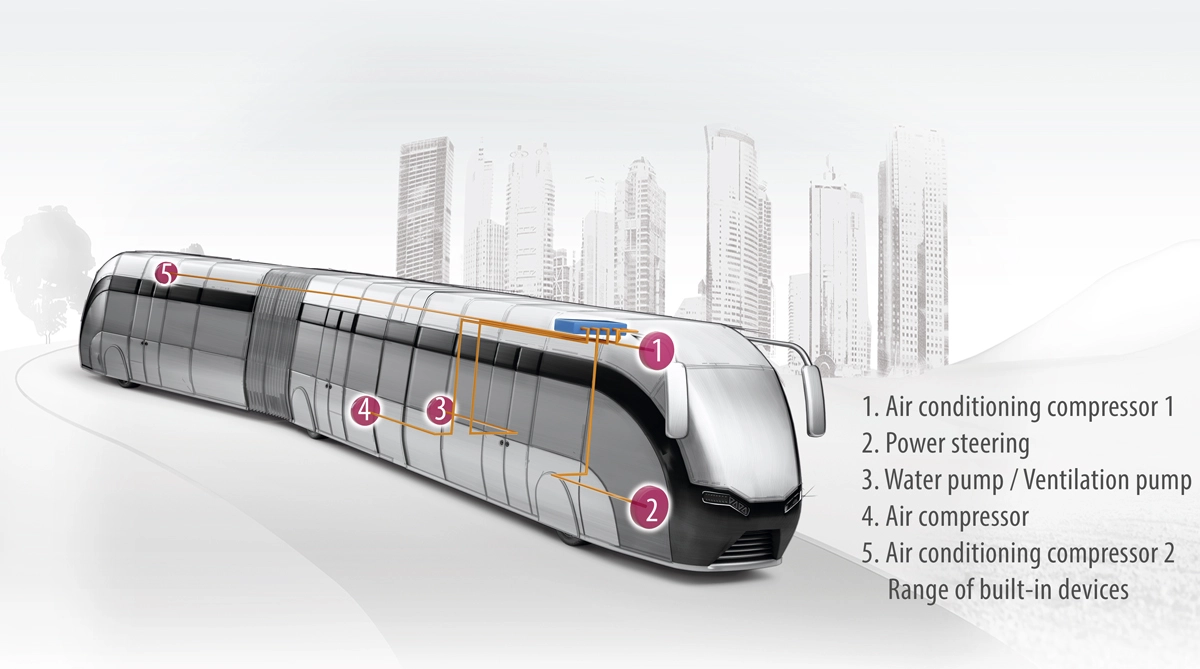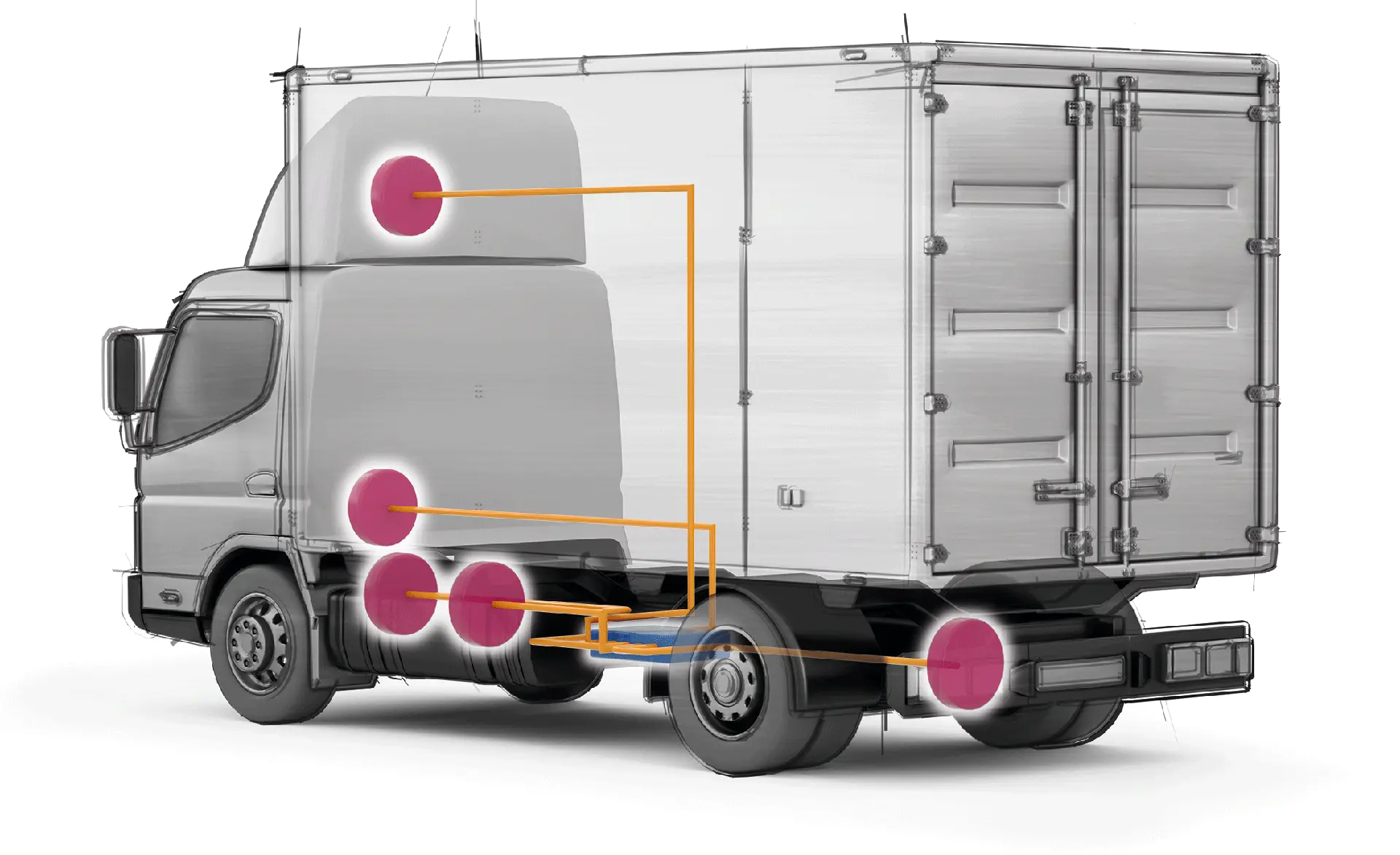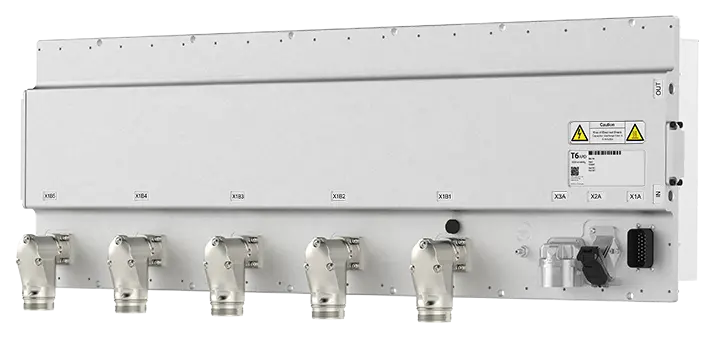Sustainable cooperation for successful e-mobility
The inverter system COMBIVERT T6 APD and the research project “ImWR”
The electrification of transport: Everyone is talking about the main drive, but the auxiliary drives in particular also offer high savings potential. KEB project manager Thorsten Sigges reveals the role of the new “T6 APD” and what is behind this.
Mr. Sigges, what is the “T6 APD”?
The integration of innovative electric drives into a new generation of vehicles plays a very special role in the field of electro mobility, since – in addition to zero emissions and noise reduction – the efficiency of the energy used can also be optimized. With the T6 APD, we have implemented a modular high-voltage drive controller system for the electrification of auxiliary units and auxiliary drives in commercial vehicles and mobile machines. Electronic systems such as the T6 ensure that voltages, currents and frequencies are adjusted efficiently and in line with requirements.
Applications are currently found particularly in urban traffic – as electrified, low-noise and emission-free buses in public transport, urban vehicles like road sweepers or in inner-city delivery traffic for the so-called “last mile”.
The product is the result of the research project "ImWR". What was the initial idea and where has reality required adjustments over time?
In the “ImWR” project, we investigated, among other things, the interaction of a modular inverter system with all other electronic vehicle components. The system should enable safe operation and not negatively influence the entire high-voltage DC vehicle topology. We also analyzed the intelligent networking of different control systems used for the exchange of information and for diagnostics in the vehicle. We have also defined early test system planning for successful product development. This enabled us to take into account the interaction between test system and product and in particular the modularity and customer requirements.
An intensive cooperation with the Institute for Industrial Information Technology (inIT), the Institute for Energy Research (iFE) at the Ostwestfalen-Lippe University of Applied Sciences and the Fraunhofer Institute for Mechatronics Design Technology (IEM) in Paderborn played a major role in the successful completion of both projects “ImWR” and “T6 APD”, which were closely linked.
One challenge was the definition of requirements in this early phase of electro mobility – around the year 2014. The market for electrified commercial vehicles had only just awakened. Thanks to the structured, process-oriented approach, we were also able to process requirements that in some cases only came up during the project period. Here, in particular, requirements analysis using systems engineering methods was a key to success.
What will happen to the T6 at KEB now that the project is over?
For 2020 this means in concrete terms: start of series production. We have already been working closely with our first customers for some time – for example, we are equipping electric buses, refuse collection vehicles and road sweepers with the T6.
We have also received the E-test mark. This means that the inverter meets all the requirements placed on automotive systems in terms of mechanical and thermal properties, environmental conditions, EMC, safety and service life. The chance to make climate-friendly and sustainable mobility possible with our T6 APD product – that was and is our motivation. It is simply an exciting task with a highly motivated team to support customers worldwide in the electrification of mobile machines and commercial vehicles.
The project
Innovation project itsOWL-ImWR within the scope of the top cluster “it's OWL” – Intelligent Technical Systems OstWestfalenLippe
- Project duration: 01.07.2014 - 30.06.2017
- Partner in the joint project:
- KEB Automation KG
- Institute for Industrial Information Technology (inIT) at the Ostwestfalen-Lippe University of Applied Sciences
- Institute of Energy Research (iFE) at the Ostwestfalen-Lippe University of Applied Sciences
- Fraunhofer Institute for Mechatronics Design Technology (IEM)
- Project goals and task areas:
- WP* 1: Development of the modular inverter system – ImWR
The requirements specification for the ImWR was supported by the methods of “systems engineering”. - WP 2: Intelligent networking in the vehicle
- WP 3: Ensuring the configurability of the modular auxiliary inverter system
- WP 4: Test system planning – requirements analysis (goal: availability of a test system for the modular inverter for the start of production – SOP)
- WP* 1: Development of the modular inverter system – ImWR
* Work package
Documentation
